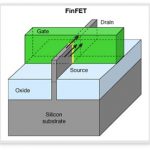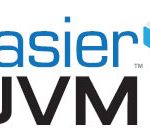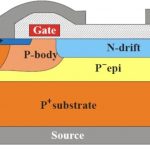Probably the most interesting thing about Neural Networks is how they can be used for complex recognition tasks that we as people can easily perform but we might have a lot of trouble explaining how. One very good example of a problem that Neural Networks can tackle is determining when people are making a fake smile. Intuitively we… Read More
Electronic Design Automation
Custom Layout Productivity Gets a Boost
In the 1970’s, when Moore’s Law was still in its infancy, Bill Lattin from Intel published a landmark paper [1]. In it he identified the need for new design tools and methods to improve layout productivity, which he defined as the drawn and verified number of transistors per day per layout designer. He said existing … Read More
The Importance of Transistor-Level Verification
According to the IEEE Std 1012-2012, verification is the acknowledgement that a product is in satisfactory condition by meeting a set of rigorous criteria. [3] Transistor-level verification involves the use of custom libraries and design models to achieve ultimate performance, low power, or layout density. [2] Prediction… Read More
Webinar alert – Taking UVM to the FPGA bank
UVM has become a preferred environment for functional verification. Fundamentally, it is a host based software simulation. Is there a way to capture the benefits of UVM with hardware acceleration on an FPGA-based prototyping system? In an upcoming webinar, Doulos CTO John Aynsley answers this with a resounding yes.… Read More
3D TCAD Simulation of Silicon Power Devices
Process and device engineers are some of the unsung heroes in our semiconductor industry that have the daunting task of figuring out how to actually create a new process node that will fit some specific, market niche with sufficient yield to make their companies profitable and stand out from the competition. One such market segment… Read More
The Most Important Point You May Have Missed at CDNLive 2016!
This was the best keynote lineup I can remember at a user group meeting. All four speakers are visionaries but from very different perspectives. The video of the event will be up later this month but from my first count the word “System(s)” was mentioned 32 times and the underlying message will transform the semiconductor industry… Read More
Innovation in Transistor Design with Carbon Nanotubes
The New York Times article “IBM Scientists Find New Way to Shrink Transistors” by John Markoff focuses on the goal of the semiconductor industry to create smaller transistors in order to remain competitive while emphasizing cutting-edge design strategies with the use of carbon nanotubes. By switching from traditional methods… Read More
Analog Design Verification — Traceability is Required
Digital verification engineers have developed robust, thorough metrics for evaluating design coverage. Numerous tools are available to evaluate testbenches against RTL model descriptions — e.g., confirming that simulation regressions exhaustively exercise signal toggles, RTL statement lines, individual statement… Read More
Path FX – the Production Proven Answer to Static Timing Analysis with Variation
I want to compliment ChipGuy on a very nice write-up of a complex topic – how to model process variation in static timing.
… Read More
PCB Design Requires Both Speed and Accuracy of SI/PI Analysis
The prevailing industry trends are clear: (1) PCB and die package designs are becoming more complex, across both mobile and high-performance applications; (2) communication interface performance between chips (and their related protocols) is increasingly demanding to verify; (3) signal integrity and power integrity issues… Read More











AI RTL Generation versus AI RTL Verification